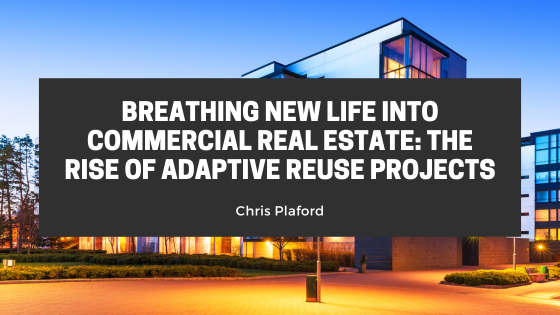In the ever-changing world of commercial real estate, the idea surrounding adaptive reuse has emerged as a transformative trend, giving aging structures a second chance at relevance. Adaptive reuse projects involve repurposing existing buildings for a new and often entirely different use, breathing fresh life into spaces that might otherwise be forgotten. This innovative approach not only preserves historical and architectural gems but also addresses the growing need for sustainable development. In this blog, learn more about the fascinating world of adaptive reuse projects and their impact on commercial real estate.
Preserving History and Architecture
One of the most compelling aspects of adaptive reuse is its ability to preserve the historical and architectural integrity of a building. Old warehouses, factories, and even schools are being transformed into vibrant, modern spaces while retaining their unique character. This not only honors the past but also contributes to the distinctive charm of the surrounding neighborhood, creating a sense of continuity between the old and the new.
Sustainability and Environmental Impact
Adaptive reuse projects align with the principles of sustainability by recycling existing structures rather than demolishing and rebuilding them. This process significantly reduces construction waste, conserves energy, and minimizes the environmental impact associated with new developments. By repurposing existing buildings, adaptive reuse contributes to a more sustainable and eco-friendly approach to urban development, a crucial consideration in today’s environmentally conscious society.
Economic Benefits
From a financial standpoint, adaptive reuse projects can offer substantial cost savings compared to ground-up construction. Repurposing existing structures often requires less capital and time, making it an attractive option for developers and investors. Additionally, these projects can breathe new economic life into declining or underutilized areas, attracting businesses and residents alike and boosting property values.
Diverse Use Cases
The versatility of adaptive reuse is evident in the myriad of projects that have successfully revitalized commercial real estate. Former industrial spaces have become trendy loft apartments, disused factories have transformed into chic office spaces, and historic schools have found new life as boutique hotels. This adaptability showcases the creativity and ingenuity of developers who embrace the challenge of turning obsolete structures into valuable assets.
Challenges and Opportunities
While adaptive reuse projects present numerous benefits, they also come with their own set of challenges. Zoning restrictions, building code compliance, and the need for creative design solutions are among the hurdles developers must navigate. However, these challenges present opportunities for architects, engineers, and planners to showcase their skills in finding innovative solutions that blend the old with the new.
Adaptive reuse projects are reshaping the commercial real estate landscape by breathing new life into neglected structures. Beyond preserving history and architecture, these projects align with sustainable practices, offer economic advantages, and demonstrate incredible versatility in repurposing spaces. As developers continue to embrace the potential of adaptive reuse, we can expect more success stories that showcase the power of creativity and innovation in transforming the built environment.
